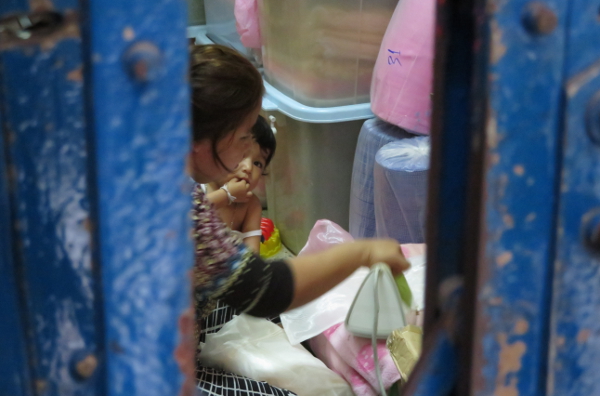
Um es vorweg zu sagen: der „weitere Tag“ ist der erste von wahrscheinlich drei Beiträgen, die inhaltlich aus einem einzigen Tag resultieren. Ich hatte ein absolut fantastisches zehnstündiges Erlebnis mit den Bangkok Vanguards auf ihrer BANGKOK360 Tour – zu viert waren wir mit einem Guide den ganzen Tag unterwegs und haben Ecken gesehen und in Bereiche reinspingsen können, auf die kein Mensch in der Form gekommen wäre. Und angefangen hat das ganze am frühen Morgen in Bangkok’s Chinatown. Wenn ihr nur einen vollen Tag in Bangkok habt, bucht diese Tour.
Let me say this up front: the „another day“ is the first of probably three posts that are fed from only a single day. I had a downright fantastic experience with the Bangkok Vanguards on their BANGKOK360 Tour – there were four of us and a guide and we explored areas and literally caught glimpses of everyday life which the regular tourist largely wouldn’t even have thought of. It all started early in the morning in Bangkok’s Chinatown. If you have only one full day to spend in Bangkok, book this tour. There, I’ve said it.
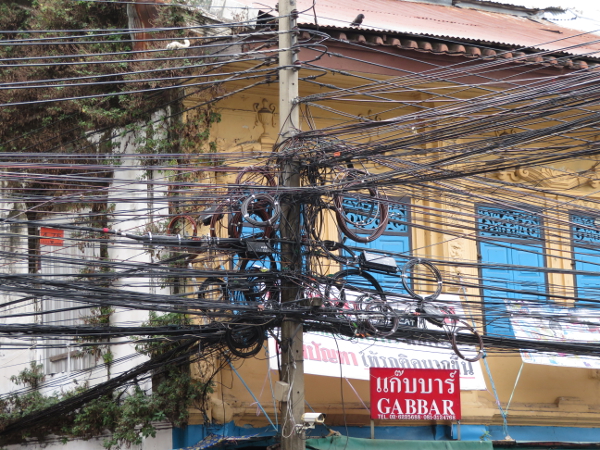
Genau betrachtet ging es los am Haltepunkt Saphan Taksin: dort bestiegen wir eine Fähre der „Orange Line“, die wie Straßen- oder U-Bahnen Teil des ÖPNV in Bangkok sind. Der Ausstieg am Kai Rachawongse war der direkte Einstieg in Chinatown – und wir kamen rechtzeitig zum Frühstückswahnsinn der Street Food Händler… ich hätte fast überall probieren mögen, aber es reichte nur zu einer Tüte verzehrfertiger Ananas-Stücke und zweier Fleischspieße… Oh, und ein Päckchen Kokospudding in Bananenblatt – aber es war ja auch noch nicht mal 9 Uhr!
Strictly speaking, we started out at the Saphan Taksin stop: that’s where we boarded a boat of the „orange line“, which form part of the public transport system in Bangkok. We got off again at the Rachawongse stop and thereby had direct access to Chinatown – where we arrived right in time for the breakfast madness of the street food vendors… I would have loved to try just about everything but managed only a bag of ready-to-eat pineapple and a couple of barbecue meat snacks… oh, and a little banana-leaf packaged coconut custard – but then it wasn’t even 9 a.m. yet!
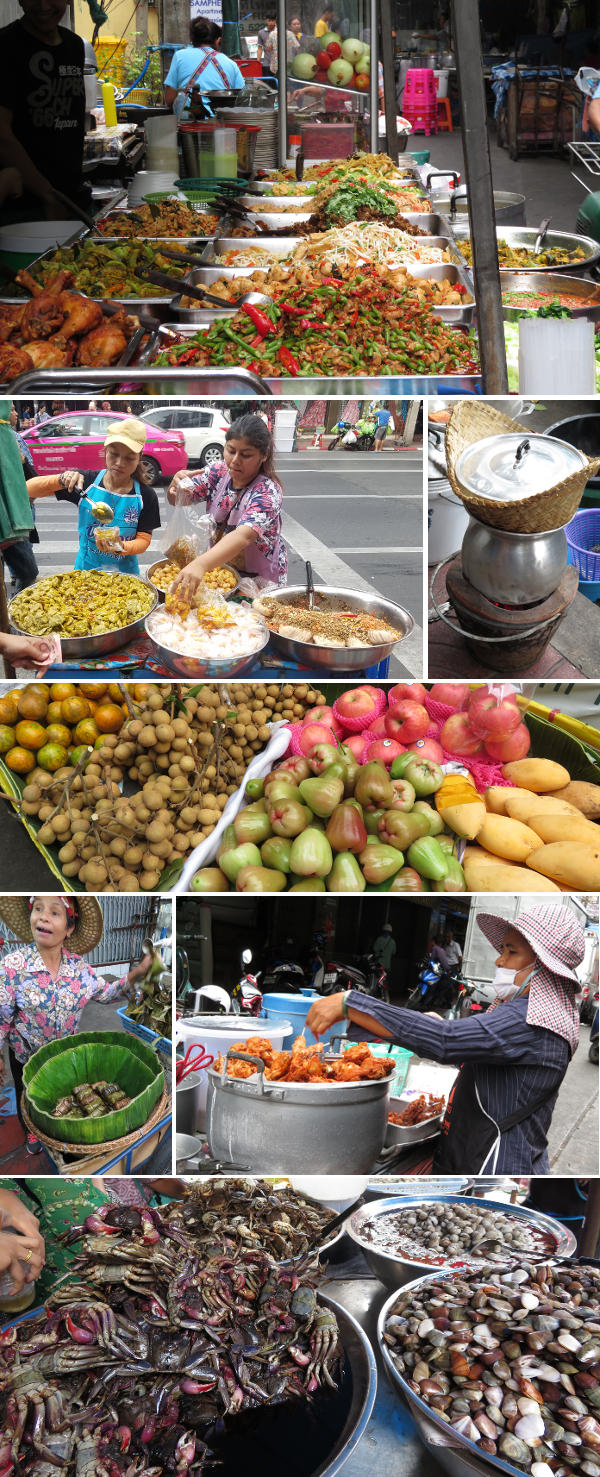
Wie bereits erwähnt, ist Bangkok eine eher junge Stadt und Chinatown gehört mit zu den ältesten Bereichen. Seit 1767 wurden die Dienste der chinesischen Teochew Händler in Anspruch genommen, um die Versorgung mit Reis und anderen Produkten sicherzustellen. Chinatown wurde dann 1782 gegründet, auf Land, das König Rama I. dafür vorsah. Der Handel florierte weiter und hatte in diesem Bereich Ende des 19./Anfang des 20. Jahrhunderts seinen Höhepunkt erreicht. Ganz zu Beginn wurde auch ein Tempel errichtet, den wir unter die Lupe nahmen.
As I’ve mentioned earlier, Bangkok is a rather young city and its Chinatown is among the oldest parts. The Chinese Teochew traders had been enlisted to make sure rice and other provisions made it to Bangkok in sufficient amounts. Chinatown was founded in its present location in 1782, on land designated by King Rama I. Trade continued to flourish and grow so that by the turn of the 19th/20th century it reached a peak. A temple also formed part of the earliest stages of the settlement, so we went to have a closer look at that as well.
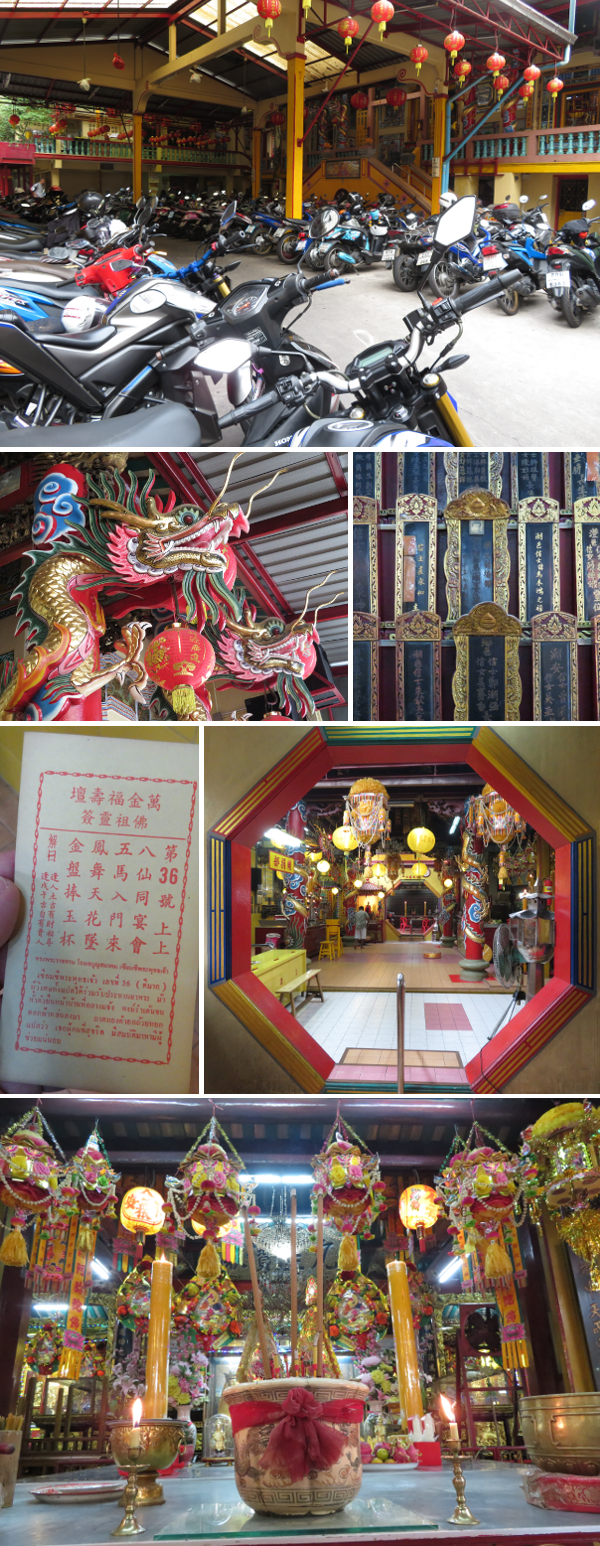
Was zuerst aussah, wie ein überdachter Mopedparkplatz (der es ja vielleicht auch war), entpuppte sich als besagter chinesischer Tempel. Auch hier wird geopfert in Form von Essen, Räucherstäbchen und Spenden – es gab allerdings nicht nur eine Buddhafigur, sondern gleich drei: für Himmel, Erde und Mensch. Am spannnensten stellten sich für uns die „Glücksstäbchen“ raus. Das sind etwa 50 Stäbchen, die in einer Dose stehen. Mit der Dose kniet man sich vor den Altar und fängt an, rythmisch zu schütteln – bis eins rausfällt. Man muss nach der eingravierten Nummer sehen und sich den Zettel mit der „Prophezeiung“ aus einem Setzkasten-ähnlichen Regal ziehen. Was mir die Nummer 36 verheißt, blieb allerdings für’s erste im Dunkeln (da ich ja weder Chinesisch noch Thai spreche).
I first thought we had come across a roofed motorcycle parking lot (which maybe it was, too) but it turned out to be the entry to a Chinese temple. Here, too, you bring offerings of food, incense sticks and cash donations – but there wasn’t only one buddha statue, there were three: for the sky, the earth and us humans. The most interesting part for us where the „fortune sticks“. Maybe 50 of them are in a box. You take the box, kneel down in front of the altar and start shaking it rythmically until one falls out. Check for the engraved number and get the info from the shelf with the „prophecies“. It would be a little while, though, before I found out what no. 36 actually means (as I’m neither proficient in Chinese or Thai).

Bevor ich nach Chinatown kam, habe ich zwei Dinge erwartet: das Street Food (Haken dran) und die basarähnlichen Gässchen voller Geschäfte mit so ziemlich allem, was man jemals brauchen könnte (auch Haken dran – ich habe kurzzeitig mit dem Gedanken an einen Container und eine Spedition gespielt, ihn dann aber doch wieder verworfen). Worüber ich nicht so nachgedacht hatte, waren die Wohnverhältnisse und das Leben „hinter den Fassaden“ im allgemeinen. Man hätte ja auch gar nicht gewusst, in welchem Gässchen es sich lohnt, mal näher reinzusehen usw. Was als erstes auffiel, war die unglaubliche Enge – in den Gassen selbst und in den Wohnungen. Das Leben ist gefühlt komplett öffentlich: im Erdgeschoss fehlten den Häusern oft die Wände zur Straße, es waren nur Gitter, die dann oft auch zur Seite geschoben waren. Bei dem Klima an sich nicht die schlechteste Idee.
Before I came to Chinatown, I expected two things: the street food (done) and the little lanes with stores, not unlike a bazaar, where you can buy all you (n)ever dreamed of (done, too – for a while I was considering contacting a company to rent a container but relax, I thought better of it). What I did not think about was the housing and living conditions. And I wouldn’t have known which little lane would be worth turning into etc. The most obvious thing to notice was the narrowness of the backlanes, and the confinement of the accommodations. It feels like life is 100% public, a severe lack of privacy: on the ground floor, there were often not even walls on the side facing the street, only a lattice door which more often than not was not even closed. Considering the climate, maybe not the worst idea.

In diesen maximal 2m breiten Gassen wird gewaschen, Moped gefahren, auf schweren Karren gezogene Früchte verkauft, gekocht, gequatscht, gespielt – gelebt. In den Erdgeschossbereichen der Häuser ist das Wohnzimmer cum Lagerfläche cum Arbeitsplatz untergebracht (z.B. Goldschmiede, Friseure) und auf uns haben diese Bereiche meist sehr zusammengewürfelt und unwirtlich gewirkt, aber es hat ja nun jeder auch andere Dinge, die ihm wichtig sind bzw. ein anderes Empfinden von Gemütlichkeit. Oder gemütlich ist gar nicht das Ziel. Wie auch immer. Zum Ende unseres Besuchs in Chinatown kamen wir noch in den Bereich eines Kanals, der nach Angaben unseres Guides noch bis vor kurzem baumbestanden war und nun ein schicker weiterer „floating market“, für die Bangkok berühmt ist, werden soll. Die Notwendigkeit gerade dieses Entwicklungsschritts entzieht sich mir.
In these max. 2m wide lanes people do laundry, ride motorcycles, sell fruit off heavy hand drawn carriages, cook, chat, play – live. The ground floor level of the buildings house the living room cum storage area cum workplace (e.g. gold smiths, hair dressers) and to us the rooms appeared rather thrown together and somewhat barren but then everybody has their own priorities and definitions of „gemutlichkeit“. Or maybe nobody is even going for a cozy atmosphere. Anyhow, at the end of our visit to Chinatown we reached the area at a canal that was until rather recently tree-lined and is now being rehabilitated as a „floating market“. Why it has to be yet another of these Bangkok landmarks – of all the things that it could be – eludes me.
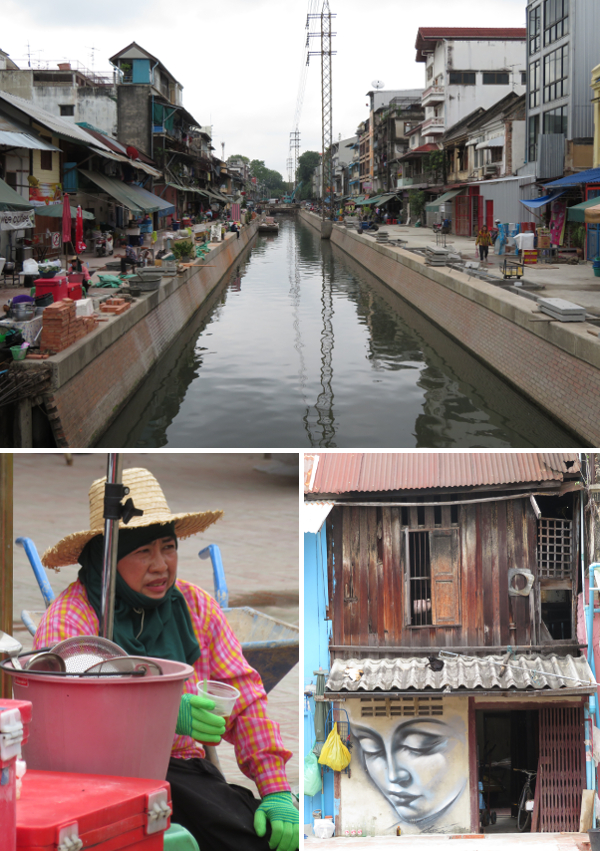
Wie lange kann das so bleiben? Will jemand, dass das so bleibt? Bislang ist Chinatown vergleichsweise schwer zu erreichen, aber das ändert sich voraussichtlich im Herbst 2019, wenn eine neue U-Bahn-Station eröffnet wird. Dazu kommt ein grundsätzliches Gentrifizierungsproblem und die Abwanderung von Teilen der Bevölkerung in „bessere“ Stadtteile. Im Vorfeld der zu erwartenden besseren Anbindung kam es schon zu Investitionsschüben, aber es werden auch Chancen gesehen, dass der Stadtteil seinen besonderen Charakter erhalten kann. HIER findet ihr einen interessanten (englischsprachigen) Artikel dazu. Doch für heute: auf bald!
How long can Chinatown retain its very particular atmosphere? Do people want to keep it? Up until now, Chinatown’s accessibility is rather limited but that will change by fall 2019 when a new subway station will be opened. Add to that a general gentrification drive and the move by parts of the population out to „better“ neighborhoods. Apparently, in the run-up to the improved connection, there has been quite some investment already, but there’s also reason to believe that this neighborhood will manage to retain its particular charme. You can read an interesting article on that HERE. But for now, I have to let you go!
Barbara

Thanks for sharing your wonderful visit around Bangkok and especially Chinatown.
LikeLike
Es ist schön mit dir um die Welt zu reisen.
LikeLike
You are an amazing tour guide my friend… Thanks so much for sharing!
LikeLike